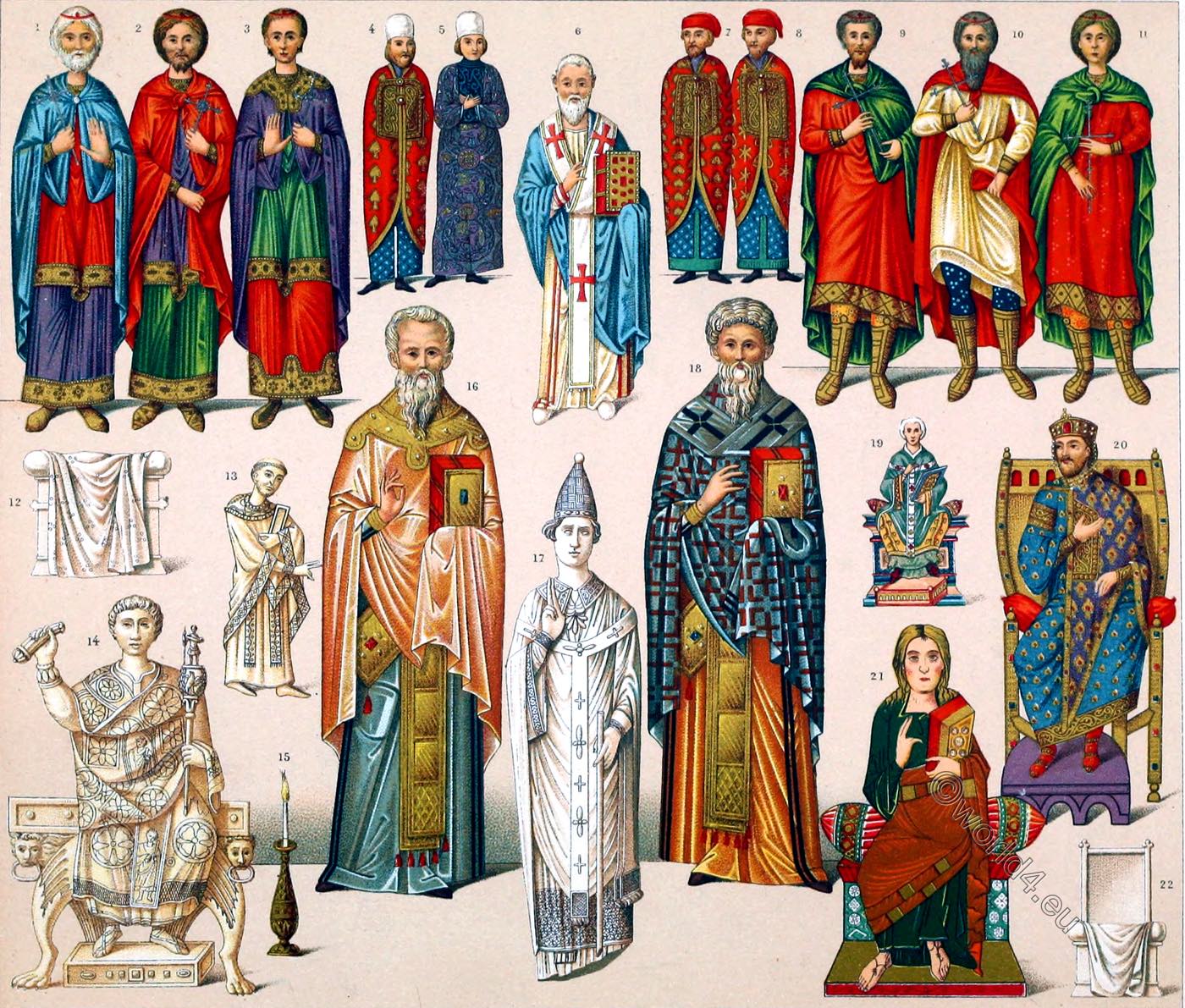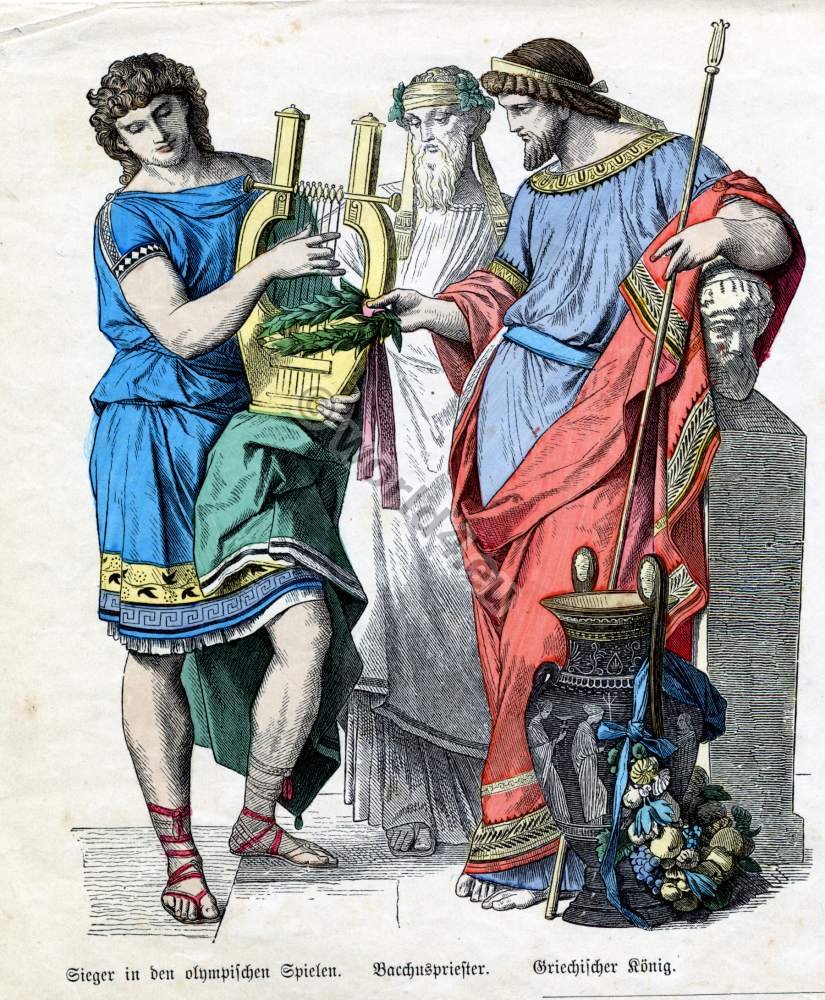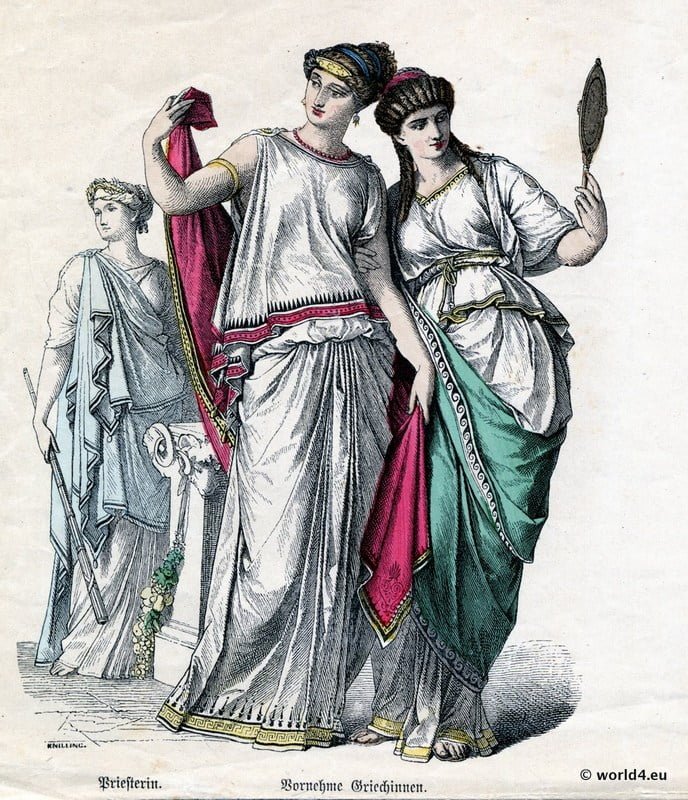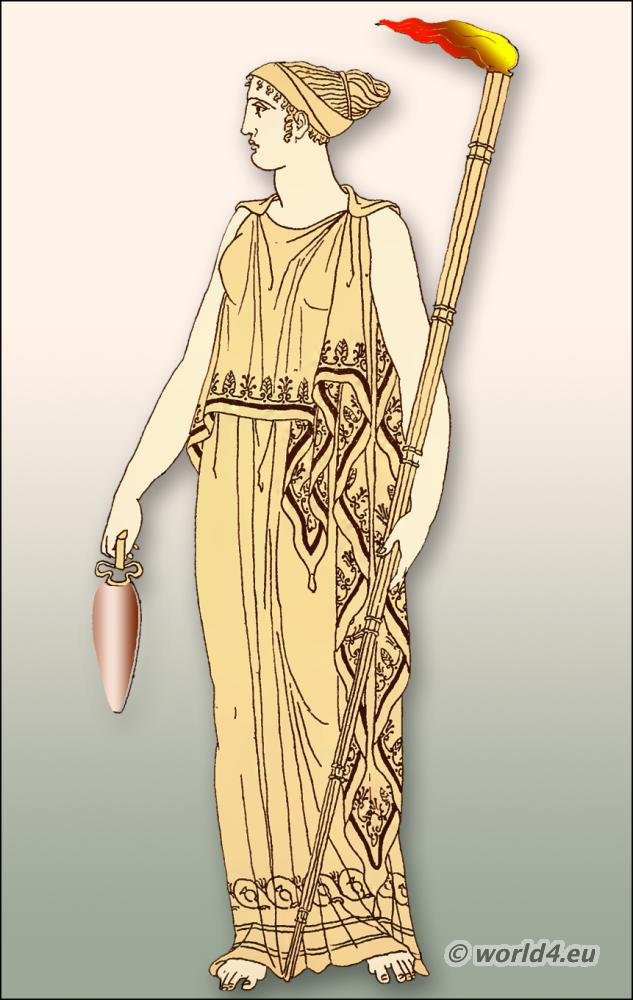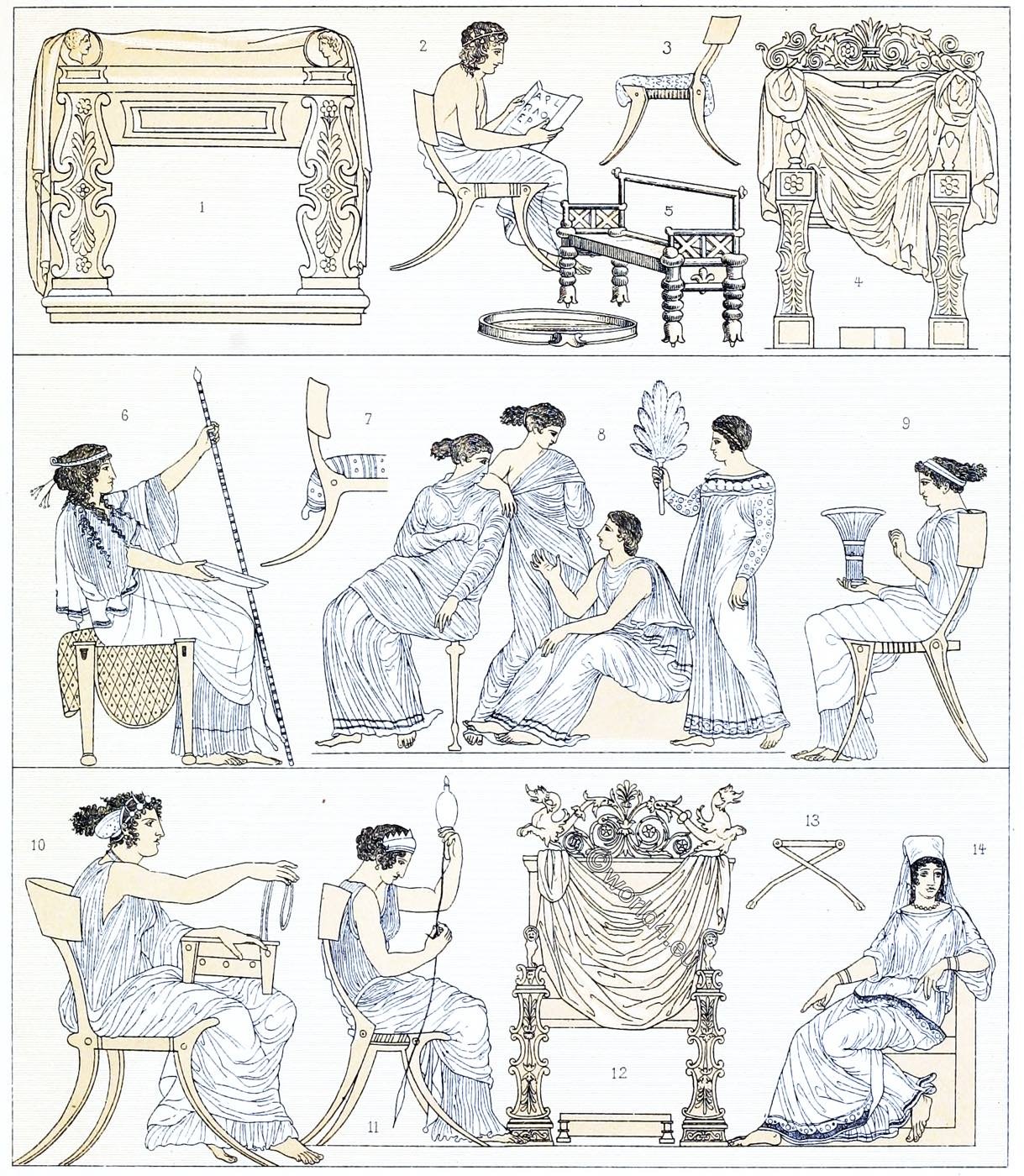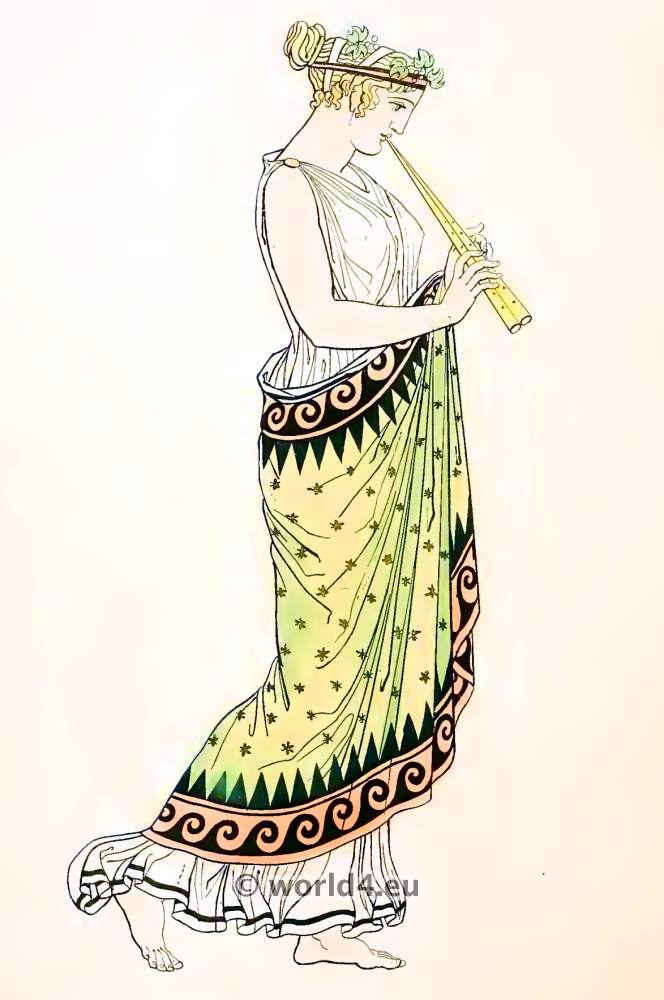
GREEK ART. CONVENTIONAL FLORA, FRETWORK, AND MEANDERS.
Plate V.
THE conventional Greek flora is very far from being an accurate representation of any species of plants; it merely adopts their general characteristics. The types are varied but slightly, and the painted ornaments on architectural monuments are of precisely the same nature as those of smaller proportions on vases. Several of these representations, however, somewhat resemble nature; the laurel, ivy, vine, and aloe may easily be recognized.
We give examples of the flora of Magna Græcia, and also of the same flora treated with greater freedom on the vases of Apulia.
- No. 1. — Painted antefixæ from the Temple of Jupiter Panhellenius, at Ægina, (Blouet, Expédition scientifique en Morée, 3 vols. folio: Firmin Didot.)
- Nos. 2, 3, 4. — Terra cotta ornaments from Athens. (Le Bas, Voyage archéologique en Grèce et en Asie Mineure; Firmin Didot.)
- Nos. 5, 6. — Paintings on vases, published by Hittorff.
- No. 7. — Paintings on vases, from the Campana Museum.
- Nos. 8 to 12. — Paintings on vases, from the Gewerbehalle.
- Nos. 13 to 16. — Ova of ogee, with undulating friezes.
- Nos. 17 to 20. —Paintings taken from figures of Apuleian vases, published by Gerhard.
- Nos. 21 to 30. — Fret-work or meanders. (The Greeks made use of waves or meanders to distinguish water from land.)
Source: Polychromatic ornament by Auguste Racinet. London, H. Sotheran and Co., 1877.


